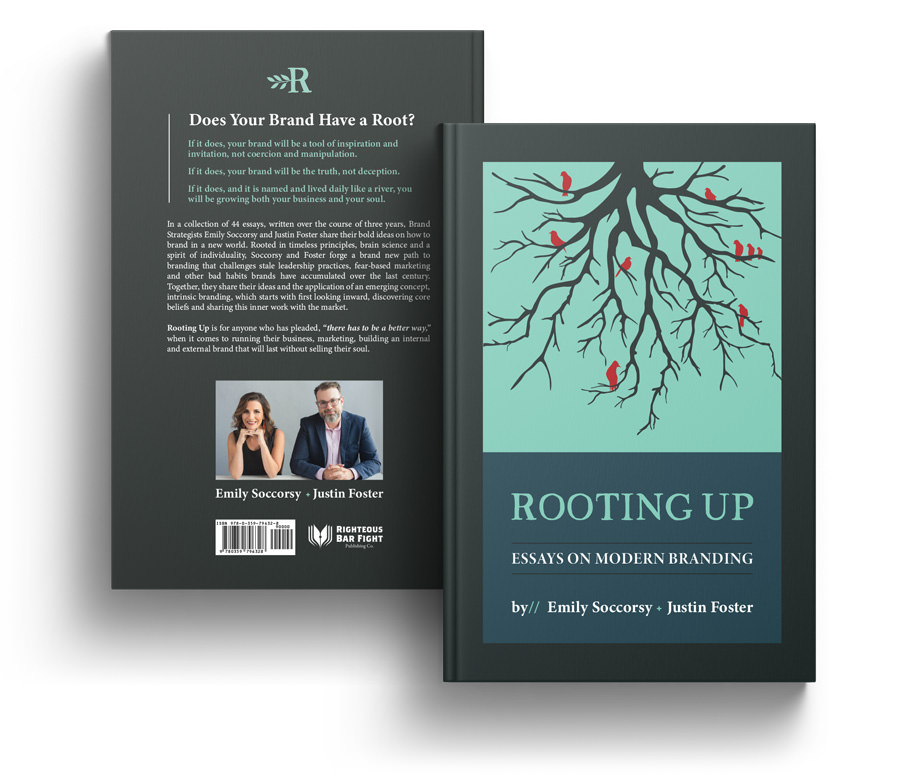Filed Under: Intrinsic Branding
By Jennifer Lawhead
When we set goals, we don’t create them in a boardroom. Or in a formal meeting. Or a Zoom call. Or in a fancy document with KPIs and milestones.
No, this year, we created our intentions – we say “meh” to the word goals – on the top of a hiking trail in Austin, Texas. The blood was pumping, the view was beautiful and we were suddenly crystal clear on what we wanted to accomplish in 2020.
This is just one of the many ways we like to do and see things differently.
Before we reveal our 2020 goals – err, intentions – we thought you might benefit from learning about our very intentional and intuitive process.
On the appointed planning day (set and held on calendars for weeks), our two founders, Emily Soccorsy and Justin Foster, began their day with anticipation but openness for their 2020 plans. Both had done a fair amount of solo brainstorming in the weeks’ prior, which manifested differently for each of them.
For Emily, she had been meditating on how to push to a new level of creativity and impact, and came prepared to set intentions around the question: Is the business serving others? Justin took the counter planning approach, asking himself: Is the business serving us?
Their competing planning approaches could have created tension, but instead, provided two valuable vantage points to structure the conversation. Where the two founders did neatly align was their ability to look inward before their time together to create a vision that was based in authenticity, self-expression and their personal values.
As the hike went on, Emily and Justin engaged in lively discussions about the future while staying true to who they are, a regular practice in being an intrinsic brand.
In the conversation, Justin discovered he wanted to be a better listener. He wanted to switch from being a taskmaster to being more of a creative person. “I’m becoming more accepting of my identity being a creative,” he realized.
Emily shared she wanted to better guard her time and prioritize self care to continue developing into the leader she wanted to be. “I’m so sick of cramming my creativity into the seams of my day,” she shared.
Then, the conversation turned from their selves to the business. In reflecting what they wanted for themselves, it was a natural transition to dissecting how the business could serve their personal goals while also serving others.
The intentions didn’t automatically write themselves; rather, the founders came together on their shared intentions by listening, asking great questions and dreaming big. The intentions they reached that day, and have already begin progress on, are:
- Finish the manuscript on book #2.
- Delight our clients continually and innovate on how we deliver.
- Continue to explore and expand into new income streams.
The magic of an intrinsic branding practice is creating a direction for the business that is rooted in our beliefs – and we were proud to do just that when setting our intentions. Root + River’s five beliefs are magic, mission, defiance, beauty and love. When the intentions were set, our beliefs stood as a measuring stick against the 2020 intentions. Could we find evidence of each of the beliefs in the intentions? When the answer was yes, we were ready to show the team, gage their excitement and finalize.
Looking at the year ahead and determining what you want to accomplish is an excellent place to start if you want to become an intrinsic brand. Just as Emily and Justin did, start with the self, discover how you want the business to serve as an extension of yourself and come together with your decision-makers to determine a collective and cohesive vision.
And, never underestimate the power of getting out of the office and into the great outdoors in the process.
Jennifer Lawhead has been an integral part of the Root + River team since 2016 and serves as the Root + River Chief of Story.
